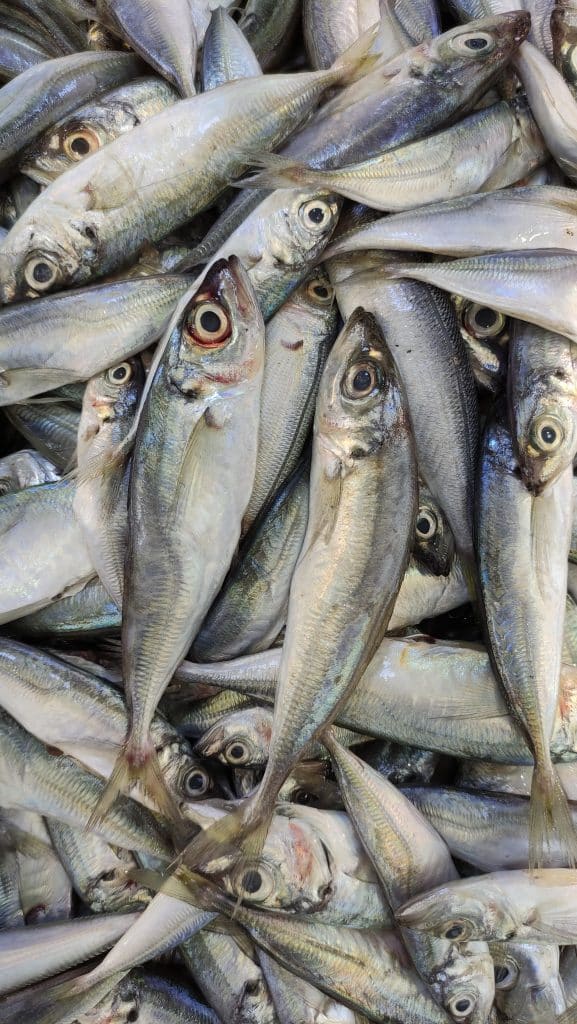We’re here to explain everything there is to know about canned mackerel, including its benefits and suitability for you.
It offers minerals (potassium, sodium, and magnesium) that support tissue growth and heart health as well as proteins, good fats, vitamin D, and minerals.
Caned mackerel should be consumed in moderation because, despite having low mercury levels, it can still make you sick.
Moms who are pregnant or nursing should stay away from it to reduce the risk of mercury contamination for their unborn children.
This article will walk you through the benefits and drawbacks of eating too much canned mackerel.
You will learn how to prepare and consume this food as well as what to watch out for.
What to know about mackerel in a can
This seafood is low in mercury and offers important nutrients.
It’s a nutritious food option, but to improve your health and safety, you should limit your intake to two to three times per week.
The following is important information about mackerel in a can:
Is it safe to eat mackerel in a can?
If you are not allergic to seafood, eating mackerel from a can is safe and healthy.
This food is an important component of a balanced diet, so you can include it in your main course.
While in the can, it’s preserved with nutrients kept intact.
However, you should read the label before consuming it.
You will gain a better understanding of the ingredients and level of processing by doing this.
Before purchasing the canned mackerel, make sure it is safe by reading the label.
The fish can be prepared in a variety of ways, such as baking, frying, and simmering.
The mackerel in the can will remain fresh until you open it.
After opening, put the contents in a covered container and keep them in the refrigerator.
Benefits of eating canned mackerel
Delicious canned mackerel has a number of advantages, such as:

Possible risks of eating canned mackerel
Although canned mackerel is a nutritious food, there are some potential risks involved in consuming it.
These risks include:
Despite having little mercury, they can accumulate and poison you if you eat too much of them.
Mercury poisoning can cause brain damage, especially in children.
Cans of mackerel should be avoided by pregnant women and young children because they carry a higher risk of mercury poisoning.
Some people may be allergic to seafood.
Anaphylaxis, hives, swelling, and difficulty breathing are all signs of a seafood allergy.
Consult a doctor if you experience these symptoms after consuming canned mackerel.
Most canned mackerel contain added salt.
For those who follow a low-sodium diet or have high blood pressure, this could be a problem.
It’s crucial to read the label and pick a product with low sodium levels.
Overconsumption of canned mackerel can cause digestive issues like indigestion, diarrhea, and vomiting.
Stop eating the mackerel if you experience these symptoms, and visit a doctor.
How to prepare and eat canned mackerel
Canned mackerel is a convenient and easy-to-prepare food.
It can be consumed directly from the can or prepared using a variety of recipes.
Eating directly from the can
If you’re eating canned mackerel straight from the can, make sure to properly drain and rinse the fish.
This will remove any added salt or preservatives.
Cooking canned mackerel by simmering
Cooking mackerel in a can is easy and quick when you simmer it.
Ingredients:
Instructions:
Cooking canned mackerel by frying
Frying is a more flavorful way to cook canned mackerel.
Ingredients:
Instructions:
Cooking canned mackerel in tomato sauce
Cooking canned mackerel with tomato sauce is a delicious method.
Ingredients:
Instructions:
How to serve canned mackerel
You can eat canned mackerel on many different occasions and at different times of the day.
Mackerel in a can can be eaten alone or combined with rice, pasta, or potatoes.
Additionally, it will complement other dishes like fishcakes, curries, and stews.
For a fantastic breakfast, top your canned mackerel with pizza, and for a fantastic lunch, blend it with potatoes or cereal.
Alternatively, you could simmer canned mackerel with tomatoes, garlic, and chili peppers to create a fish-based pasta sauce.
This will be ideal for brunch with friends, camping, or dinner when you’re on the go.
Frequently asked questions (FAQs)
Before opening, you can keep your canned mackerel in a cool, dry place for up to two years.
You should eat the can within two days of opening it.
After that, you can keep it in the freezer for up to three months or the refrigerator for three days.
Can I eat mackerel bones?
The soft and delectable bones found in canned mackerel can be consumed.
However, as they might be sharp and dangerous, you should avoid eating the bones in fresh or cooked mackerel.
Is mackerel better food than tuna?
Mackerel and tuna are both healthy seafood.
They are high in protein and omega-3 fatty acids.
However, canned tuna may contain more mercury than mackerel.
Therefore, it’s essential to eat them in moderation.
How long will mackerel stay after opening the can?
Mackerel should be eaten within two days of the can being opened.
After that, you can only keep it in the freezer for up to three months or the refrigerator for three days.
Which canned fish are safe to eat?
It’s safe to eat a variety of canned fish, such as salmon, sardines, herring, and mackerel.
But make sure the fish is wild-caught and canned in water or olive oil by reading the label.
Additionally, you should limit your intake of canned tuna because it might have higher mercury levels than other fish.
Canned mackerel is nutritious and convenient seafood for different meals.
This fish is abundant in healthy omega-3 fatty acids and protein.
When consumed in moderation, fish is safe for those who enjoy it, but young children and pregnant women should limit their intake due to the possibility of mercury contamination.
When preparing this delectable dish, use your imagination and versatility to maximize the advantages it offers.

Cooking canned mackerel by simmering
FAQ
How much mackerel can I eat a day?
Although experts advise consuming up to four portions of oily fish, such as mackerel and salmon, per week, those who consume more may be endangering their health.
Is all mackerel high in mercury?
Mackerel. Alaskan Atlantic and Atka mackerel are high in anti-inflammatory omega-3s and low in mercury, but not all mackerel is recommended. King mackerel from the Gulf of Mexico and Western Atlantic Ocean has a high mercury content. Due to concerns about mercury, Zumpano suggests limiting Spanish mackerel as well.
How much mackerel is a serving?
Mackerel (4,580 mg/serving) Mackerel are incredibly nutrient-rich, containing a 3 500% of the recommended daily intake (RDI) for vitamin B12 and 130% for selenium are contained in a 5-ounce (100-gram) serving (5).
Is it good to eat canned mackerel everyday?
It is common knowledge that fish and shellfish are excellent sources of a variety of nutrients. Long-chain omega 3 fatty acids are found in abundance in oily fish, such as mackerel and salmon, and consuming the recommended 250 mg daily can help keep your heart healthy2.
